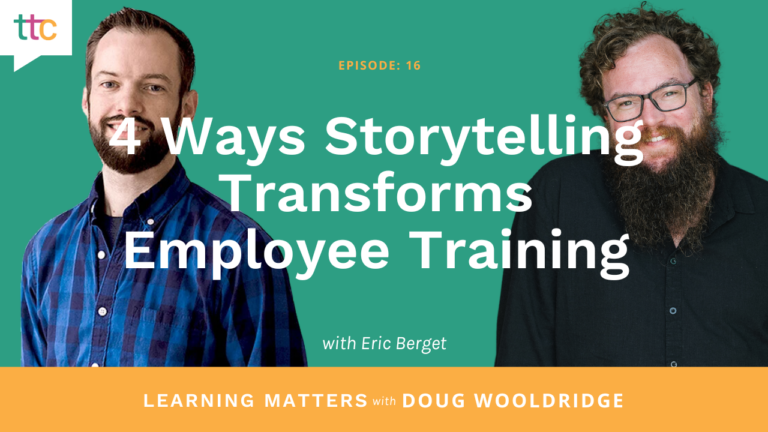As instructional designers, it can sometimes feel like we are the star of a one-person band. We’re expected to be able to write any type of training a business may want while being masters of every part of the instructional design process. That is one tall order! But I’d like to argue that you shouldn’t try to be the best at everything if you really want to be great at something specific. Think of finding your niche in instructional design as an opportunity to define your calling card in the training industry — that thing you want to be known and respected for doing well.
Your instructional design niche is like your calling card in the training industry. Share on X
It’s the difference between being a one-stop shop where customers might have to settle for something that “just gets the job done” versus being a specialty boutique that provides unique solutions tailored to the needs of its customers, of the highest quality and built with exceptional expertise.
So how do you move from that “jack-of-all-trades” skill set to a specialized one? Keep reading as I walk you through how to find and refine your niche.
Find Your Focus
Think of one area you excel in and truly enjoy when it comes to designing training. Do you have a knack for writing killer facilitator guides or participant workbooks? Maybe eLearning or mobile learning is more your style? Are you good at building PowerPoints?
Related: How to Design Your PowerPoint Slides Like a Pro
Figure out the one thing you’re really good at as an instructional designer and strive to be the best at it. Here’s why — when you master an instructional method, your confidence will increase in that area, and you’ll become more efficient at building that type of content. Instead of getting stuck thinking “I don’t know where to start,” you’ll know exactly where you want to go. Over time, that same confidence and efficiency will pour into other areas of your work, which can help you unlock new skills or opportunities that you would have never even considered.
Let me show you how focusing on your strengths can lead to improving in other areas from my own experience. I used to write mainly instructor-led training, job aids, and a little bit of scripting for some educational videos. My writing was fine, but my visuals were blah — some might even say a bit cheesy. This was holding me back from an instructional design perspective. So, I sat down with a colleague who had a background in graphic design. She opened my eyes to why the details of visuals mattered and how they could help tell a story or completely derail a person from the subject at hand. From there, I tried to learn as much as I could about visual design and how to use those principles to breathe life into every piece of learning I developed.
Related: How to Bring Your PowerPoint Training to Life with Better Animations & Transitions
This led to being able to build better PowerPoint presentations, more interesting job aids and workbooks, and ultimately down the path of becoming an eLearning and mobile learning developer. But none of this would have been possible if I hadn’t asked myself what I was good at and how to get better at it. It’s an ongoing process.
Here are some prompts to get you thinking about what it is you want to be great at doing:
- What type of training do I like designing and why?
- Where do I get the most positive feedback on my work?
- What do people say about my work?
- Do I like the kind of work I’m currently doing?
- Am I enjoying spending X amount of time on X project?
The answers to these questions will help you identify what you are good at and want to do so you can spend more time developing and honing those skills. That’s the trick. Once you know what you’re good at, don’t stop learning about it. Find new ways to enhance your focus and continue to build those skills.
Refine Your Skills to Become an Expert
By now, you’re starting to see the importance of figuring out what you are good at. The next step is crucial — how do you get even better at it? Here are a few questions to help you think about where you need to focus your time and energy when refining your skills:
- How are my writing skills?
- What areas of my writing could be improved?
- How easy or hard is it for me to identify objectives and ensure there is content that links to those objectives?
- How good am I at telling stories?
- Am I good at writing scenarios?
- Do I know how to write meaningful activities?
- Am I able to capture the details of a process or procedure?
- How are my visual skills?
- What do people say about the visual aspects of the training I develop?
- Do my visuals enhance or detract from the content?
- Do I struggle to find the right type of imagery?
- Do I understand the basic principles of visual design (i.e. contrast, repetition, alignment, and proximity)?
- What tools or software do I use to build my projects?
- What level of confidence do I have in using those tools?
- Do I know where to find answers on how to use the tools?
- Would I benefit from taking a course on a tool or its application?
- Where do I get “hung up” or waste time when using a specific tool?
The point here is to identify a target area to begin enhancing your instructional design skills — something you would like to focus on for your own benefit. You can always add more skills later, but focus on one area that appeals to you first.
Prioritize Your Professional Development
Once you know what you want to be great at and what skills you need to focus on, it’s time to act. Give yourself the permission and time to commit to this goal.
As instructional designers, we already know the value of having practice be a part of the learning and development process — it’s no different for our own development. Set aside time to learn more about your chosen area of focus and look for opportunities that will allow you to practice those skills. A good method to use here is the one outlined in Josh Kaufman’s The First 20 Hours manifesto. In a nutshell, be willing to “commit to at least 20 hours of deliberate practice.” With that in mind, what area do you want to develop, where will you spend your time, and what’s holding you back from getting started today?








